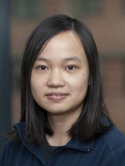Ongoing genome doubling shapes evolvability and immunity in ovarian cancer Journal Article
| Authors: | McPherson, A.; Vázquez-García, I.; Myers, M. A.; Al-Rawi, D. H.; Zatzman, M.; Weiner, A. C.; Freeman, S.; Mohibullah, N.; Satas, G.; Williams, M. J.; Ceglia, N.; Norkūnaitė, D.; Zhang, A. W.; Li, J.; Lim, J. L. P.; Wu, M.; Choi, S.; Havasov, E.; Grewal, D.; Shi, H.; Kim, M.; Schwarz, R. F.; Kaufmann, T.; Dinh, K. N.; Uhlitz, F.; Tran, J.; Wu, Y.; Patel, R.; Ramakrishnan, S.; Kim, D.; Clarke, J.; Green, H.; Ali, E.; DiBona, M.; Varice, N.; Kundra, R.; Broach, V.; Gardner, G. J.; Roche, K. L.; Sonoda, Y.; Zivanovic, O.; Kim, S. H.; Grisham, R. N.; Liu, Y. L.; Viale, A.; Rusk, N.; Lakhman, Y.; Ellenson, L. H.; Tavaré, S.; Aparicio, S.; Chi, D. S.; Aghajanian, C.; Abu-Rustum, N. R.; Friedman, C. F.; Zamarin, D.; Weigelt, B.; Bakhoum, S. F.; Shah, S. P. |
| Article Title: | Ongoing genome doubling shapes evolvability and immunity in ovarian cancer |
| Abstract: | Whole-genome doubling (WGD) is a common feature of human cancers and is linked to tumour progression, drug resistance, and metastasis1, 2, 3, 4, 5–6. Here we examine the impact of WGD on somatic evolution and immune evasion at single-cell resolution in patient tumours. Using single-cell whole-genome sequencing, we analysed 70 high-grade serous ovarian cancer samples from 41 patients (30,260 tumour genomes) and observed near-ubiquitous evidence that WGD is an ongoing mutational process. WGD was associated with increased cell–cell diversity and higher rates of chromosomal missegregation and consequent micronucleation. We developed a mutation-based WGD timing method called doubleTime to delineate specific modes by which WGD can drive tumour evolution, including early fixation followed by considerable diversification, multiple parallel WGD events on a pre-existing background of copy-number diversity, and evolutionarily late WGD in small clones and individual cells. Furthermore, using matched single-cell RNA sequencing and high-resolution immunofluorescence microscopy, we found that inflammatory signalling and cGAS-STING pathway activation result from ongoing chromosomal instability, but this is restricted to predominantly diploid tumours (WGD-low). By contrast, predominantly WGD tumours (WGD-high), despite increased missegregation, exhibited cell-cycle dysregulation, STING1 repression, and immunosuppressive phenotypic states. Together, these findings establish WGD as an ongoing mutational process that promotes evolvability and dysregulated immunity in high-grade serous ovarian cancer. © The Author(s) 2025. |
| Journal Title: | Nature |
| ISSN: | 0028-0836 |
| Publisher: | Nature Publishing Group |
| Publication status: | Online ahead of print |
| Date Published: | 2025-07-16 |
| Online Publication Date: | 2025-07-16 |
| Language: | English |
| DOI: | 10.1038/s41586-025-09240-3 |
| PROVIDER: | scopus |
| PUBMED: | 40670783 |
| PMCID: | PMC12390843 |
| DOI/URL: | |
| Notes: | The MSK Cancer Center Support Grant (P30 CA008748) is acknowledged in the PDF. Corresponding MSK author is Sohrab P. Shah -- Source: Scopus |
Altmetric
Citation Impact
BMJ Impact Analytics
MSK Authors
-
 274
274Gardner -
 101
101Lakhman -
 17
17Mohibullah -
 717
717Chi -
 476
476Sonoda -
 12
12Clarke -
 903
903Abu-Rustum -
 202
202Zamarin -
 293
293Zivanovic -
 178
178Grisham -
 254
254Long Roche -
 247
247Viale -
 616
616Aghajanian -
 646
646Weigelt -
 84
84Bakhoum -
 123
123Friedman -
 119
119Broach -
 90
90Kundra -
 110
110Liu -
 4
4Patel -
 95
95Shah -
 9
9Grewal -
 11
11Li -
 10
10Lim -
 42
42Mcpherson -
 25
25Ceglia -
 45
45Kim -
 25
25Wu -
 17
17Williams -
 113
113Ellenson -
 15
15Shi -
 10
10Kim -
 13
13Rusk -
 14
14Di Bona -
 9
9Al-Rawi -
 7
7Uhlitz -
 6
6Havasov -
 9
9Weiner -
 2
2Freeman -
 8
8Zatzman -
 21
21Green -
 2
2Choi -
 4
4Satas -
 4
4Myers -
 8
8Varice -
 2
2Ali -
 1
1Tran -
 1
1Wu
Related MSK Work





